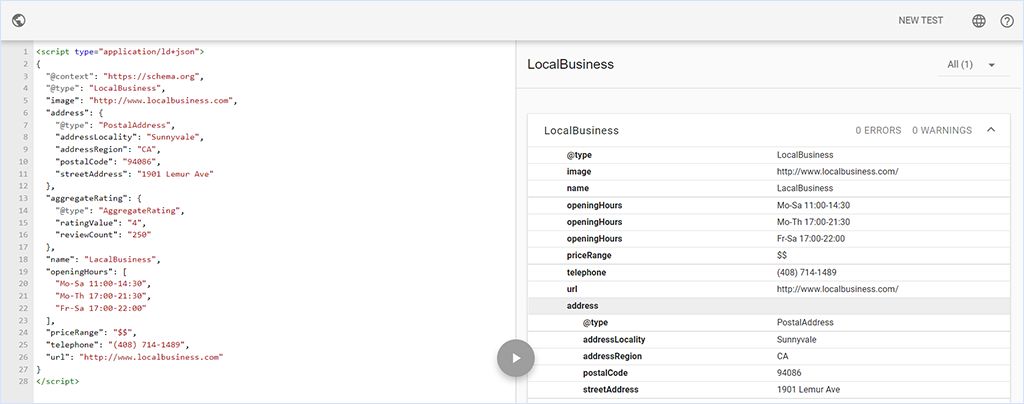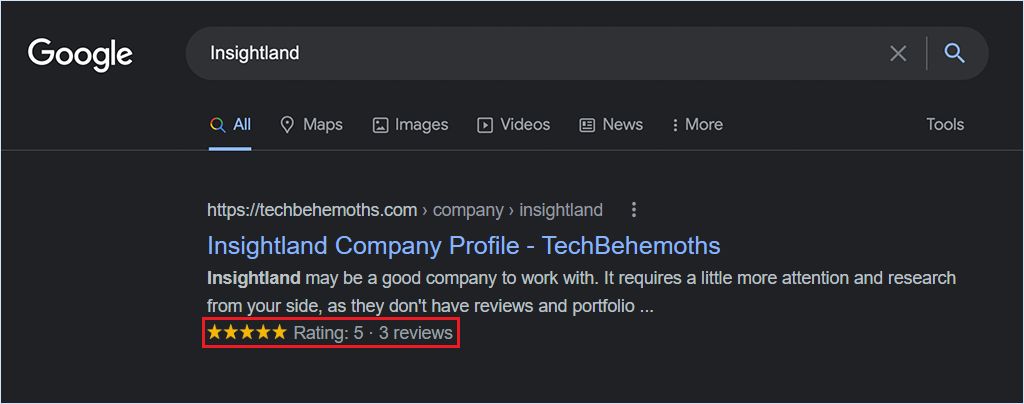What Schema.org structured data is worth using from an SEO perspective?

Schema.org structured data – is a special method of representing data on websites, co-developed by Microsoft, Google, Yandex and Yahoo, which allows search engines to evaluate their content in an easier and more accurate manner. In addition to benefits in terms of easier access to website data, using relevant structured data allows search engines to display rich snippets next to search results. This solution not only enhances the appearance of a given search result compared to the others, but also provides the user with additional information about the website he or she intends to visit. This article will show you how and what structured data should be used to make the most of its potential. Check out for yourself!
Schema.org’s documentation is very extensive, and the advice contained therein allows you to implement a huge number of additional data, including those that, for various reasons, have not been placed directly on the page. Is maximizing the use of all the elements offered by Schema.org always a good idea? Definitely not!
The site content incorporated in the structured data should reflect only the information that is visible on the website from the user’s perspective. Any attempt to “smuggle in” additional information in the form of structured data may be viewed by search engines as an attempt to manipulate rankings. That’s why it’s so important to choose the right elements of structured data.
The selection of structured data can be broken down into several steps:
1. Defining the type of the website
A simple showcase website, information website or e-commerce site? In most common cases, structured data can be matched to the type of the website https://schema.org/LocalBusiness).
2. Matching attributes to on-page content
After selecting the proper documentation, it is time to match the attributes contained in it with the on-page content (e.g.: if address data has not been provided on the site, such information should also not be included in the structured data).
3. Implementation of data structured in line with documentation
Once all the data has been prepared, the next step is the implementation. In addition to the standard Schema.org documentation, you should also refer to Google official structured data documentation
4. Verification of implementation
You should verify whether the data has been implemented correctly. To do so, we recommend using Schema.org’s Validator, and also to refer to Google’s Rich Results Validator. Some structured data may not be officially supported by Google, so their validator may show a message that there are no rich results. In this case, the verification of implementations should always be supported by an additional tool.
According to the official Schema.org documentation, there are 3 ways to implement structured data. These are as follows:
- Microformats – data is tagged as HTML attributes added to tags directly in the code of the website. This is the most secure method of implementing structured data from the SEO perspective. This excludes the possibility of tagging the data that is not present in the site structure.
- RDFa – is a method for implementing structured data standardized by the W3C organization. RDFa implementation, except for the labeling of attributes, does not differ from Microformats. Implementation is also done by using the appropriate attributes in HTML tags. This solution has an advantage in its versatility, as such structured data can be adapted for implementation in many programming languages.
- JSON-LD – is the most versatile method of adding structured data. The code, tagged with <script></script>, is implemented in the <head></head> section or in the <body></body> section of the website. Due to the simplicity of the structure, this is the most legible solution, both for indexing robots and people. When implementing structured data using this method, be sure not to include additional information in the JSON-LD code that is not available on the site from the user’s perspective.
The most popular methods of incorporating structured data are microformats and JSON-LD, and it is these methods that can be found in search engine documentation for structured data.
Structured data used on websites include:
Organization – used to identify the organization the website represents. Enables tagging information such as name, URL, logo, phone number, physical address of the organization, etc… There are many subtypes of structured data to help you identify more precisely the industry and type of the organization in question (e.g.: LocalBusiness); however, they all use a similar pattern as the Organization. LocalBusiness and subtypes of this structured data are also used by search engines (e.g.: Google) to support the feeding of data to Google My Business.
NewsArticle – can help improve an article’s visibility in standard search results. In addition, as Google does not require the AMP format for a site to appear in the latest news carousel, tagging a news article with this structured data increases the chance of it being featured there.
AggregateRating – tagging a blog article or product on an e-commerce website with AggregateRating structured data allows the star rating of a product or article to appear in search results. Note that this structured data can be implemented when the site has a review form, and all entries published using this form are available on the website from the user level.
Recipe – this type of structured data enables an article of a culinary nature, containing a cooking recipe, to appear in the extended results for recipes.
FAQPage – when a FAQ page is tagged with this structured data, such questions and answers can appear in search results. We can tag an unlimited number of questions and answers on the page, but it is the search engine that will decide which ones should be displayed in the SERP.
- JobPosting
- ImageObject
- Event
- Book
- BreadcrumbList
- Course
- SpecialAnnouncement
- Quiz
- VideoObject
When choosing the right structured data, you should be guided primarily by the type of website and its content. Tagging all the information available on the website with structured data is not a good idea. They should be used to tag as much information as possible that may be useful from the perspective of search engines and indexing robots.

